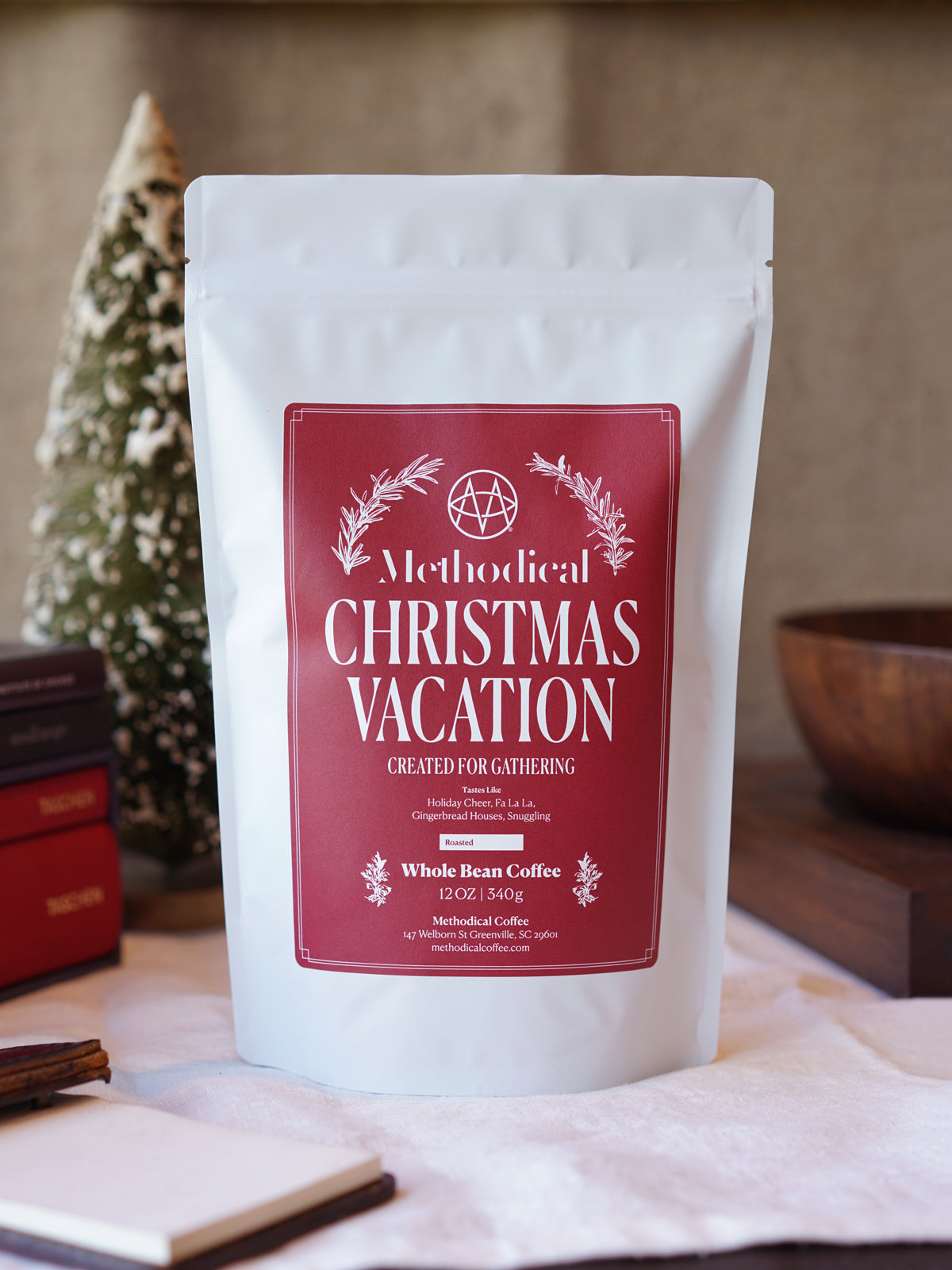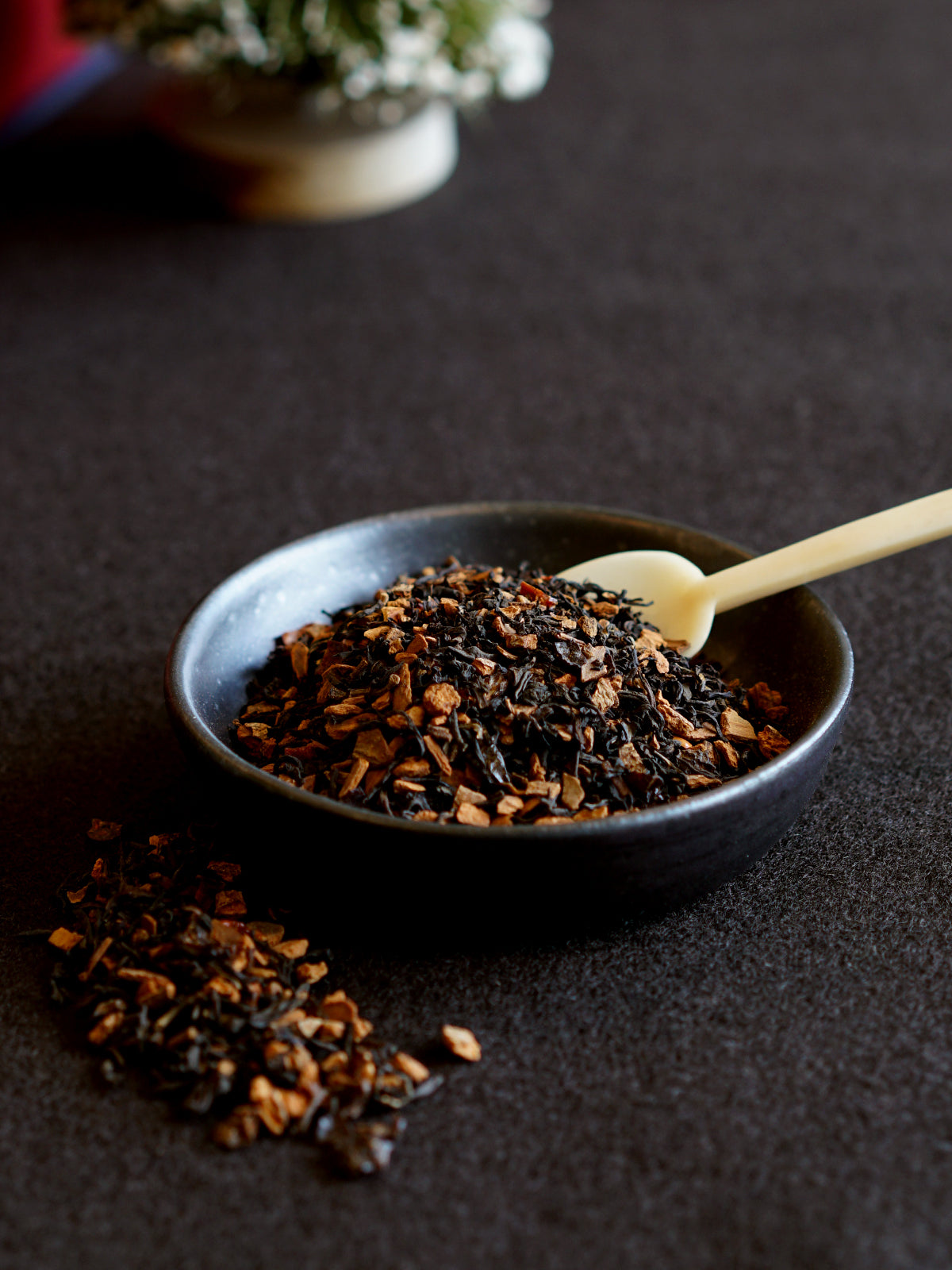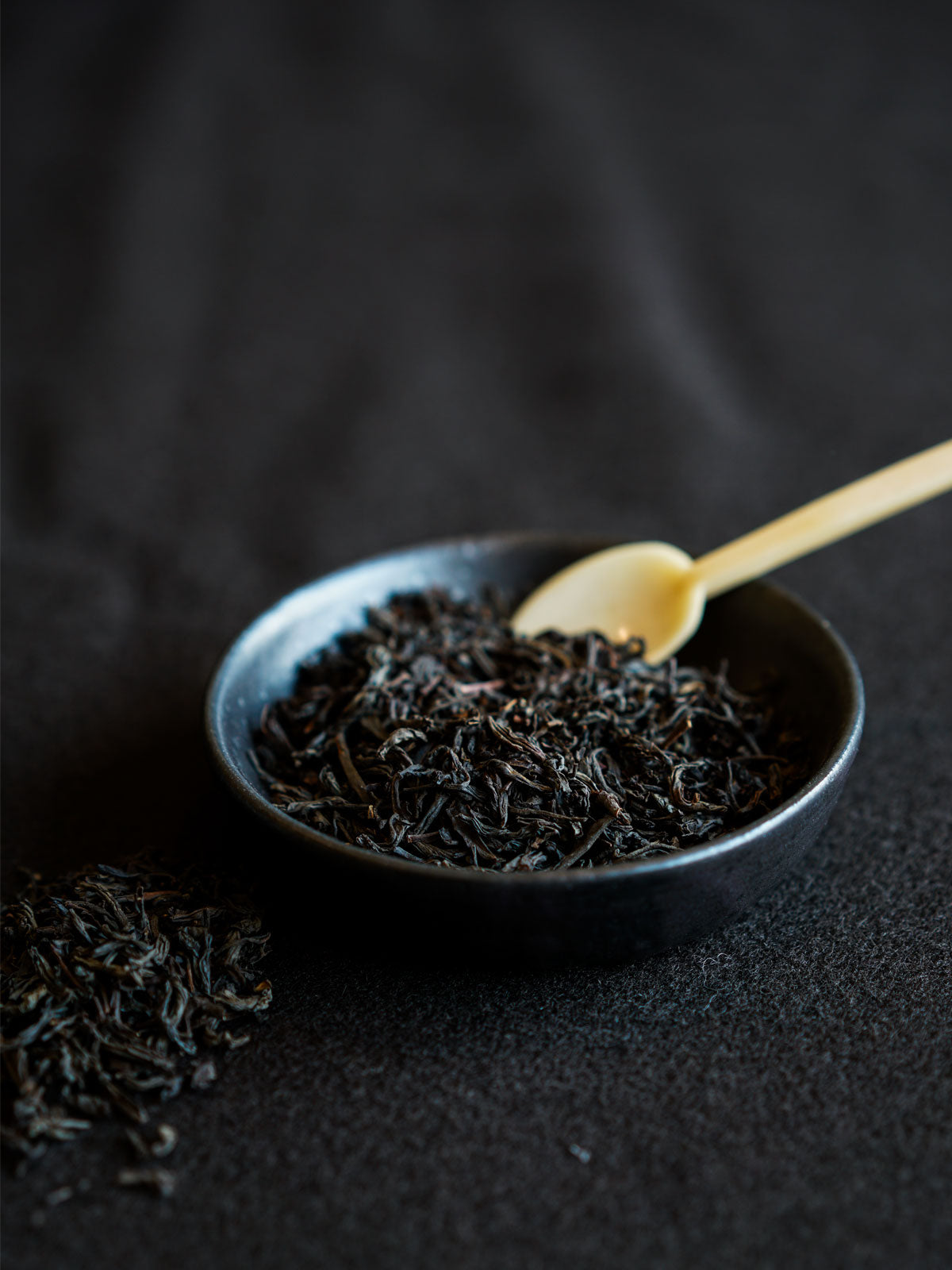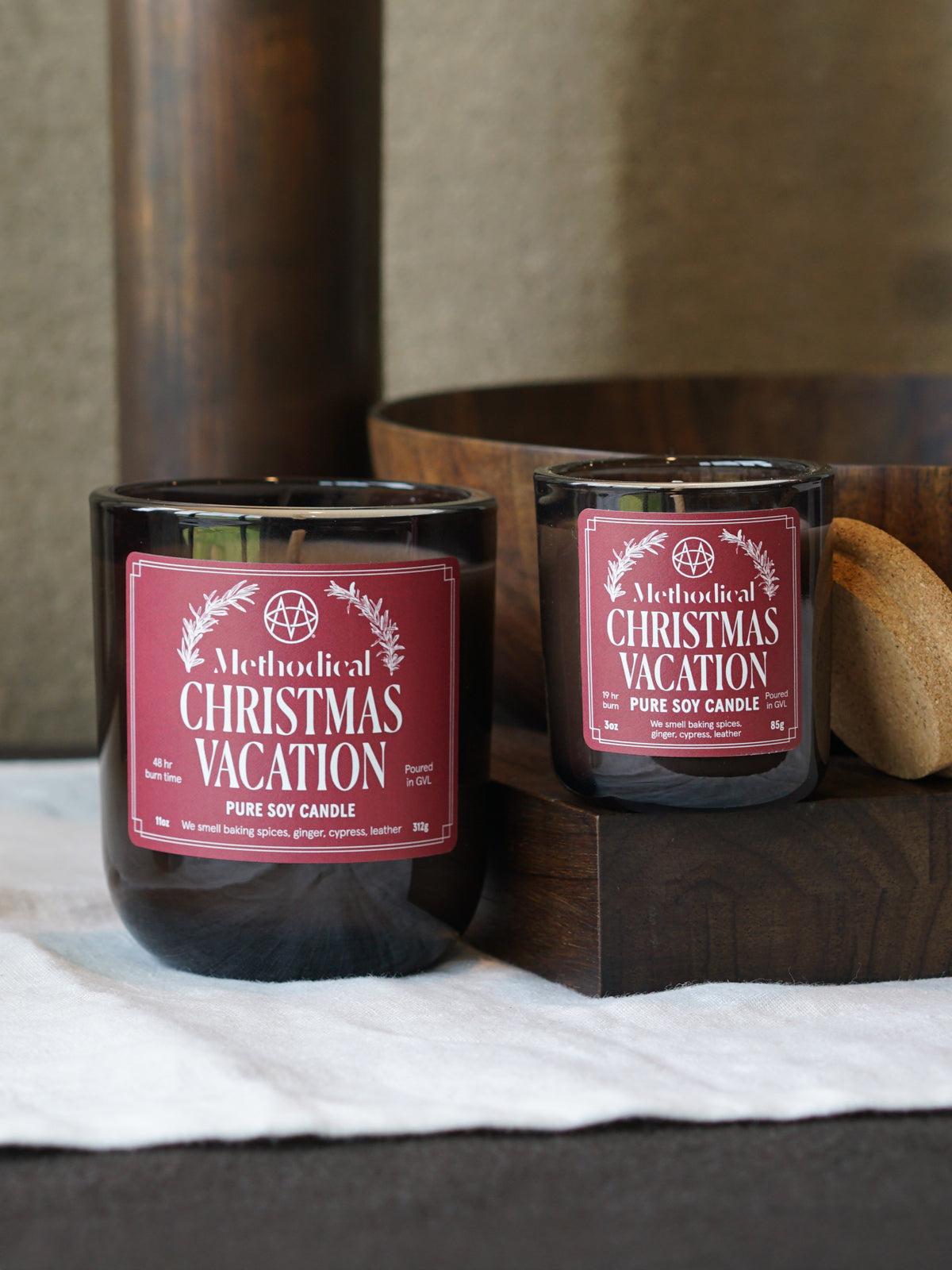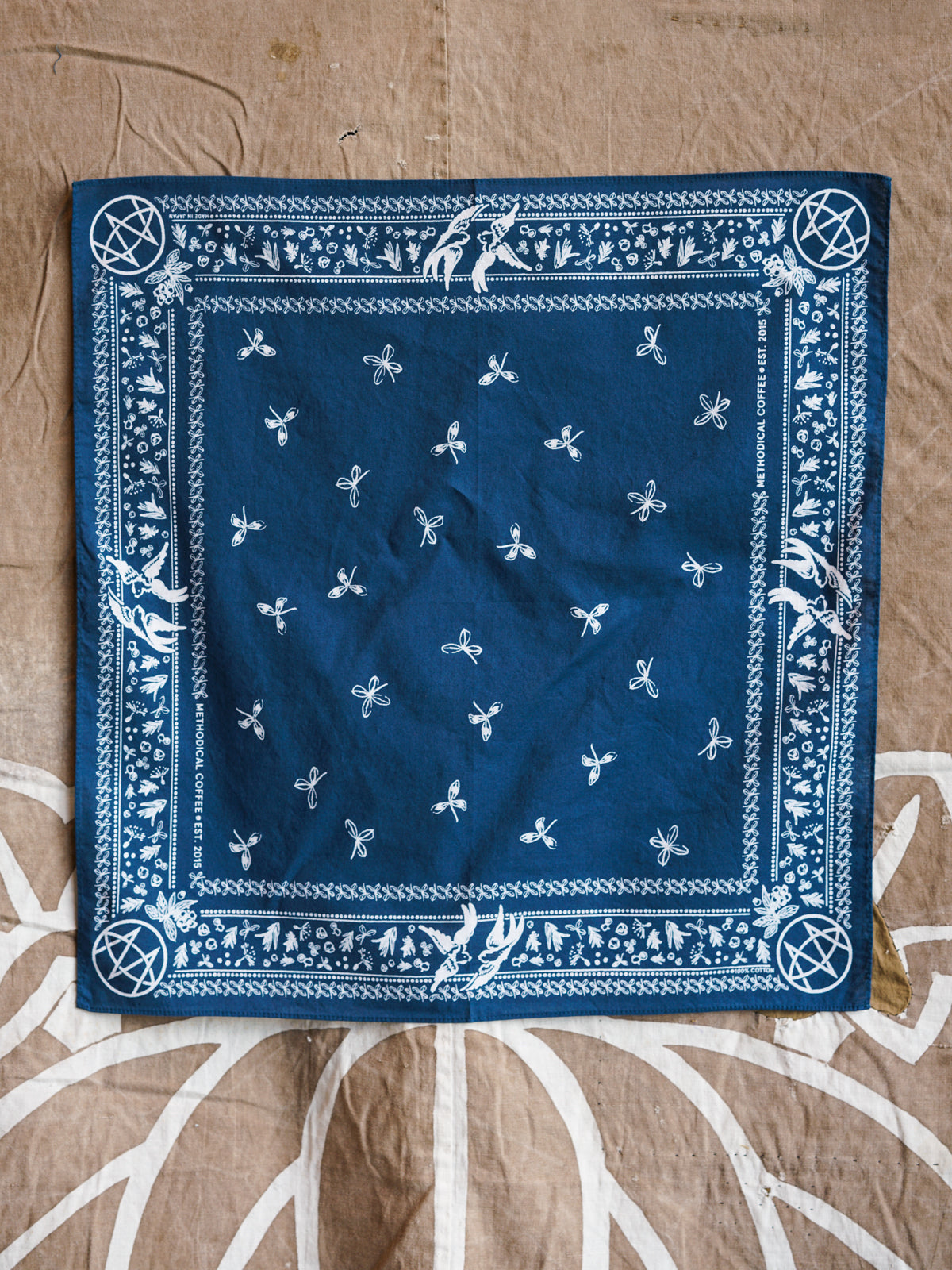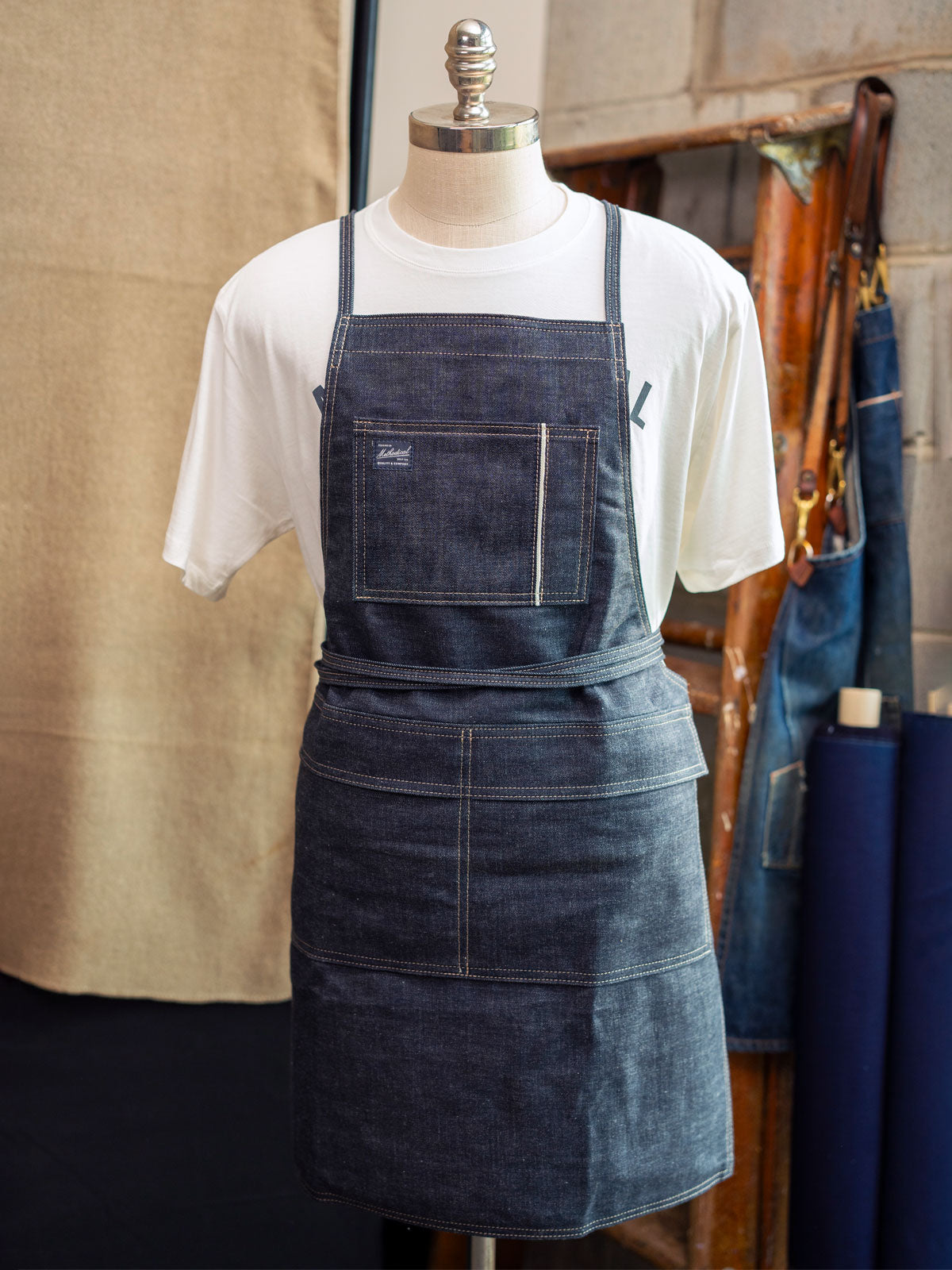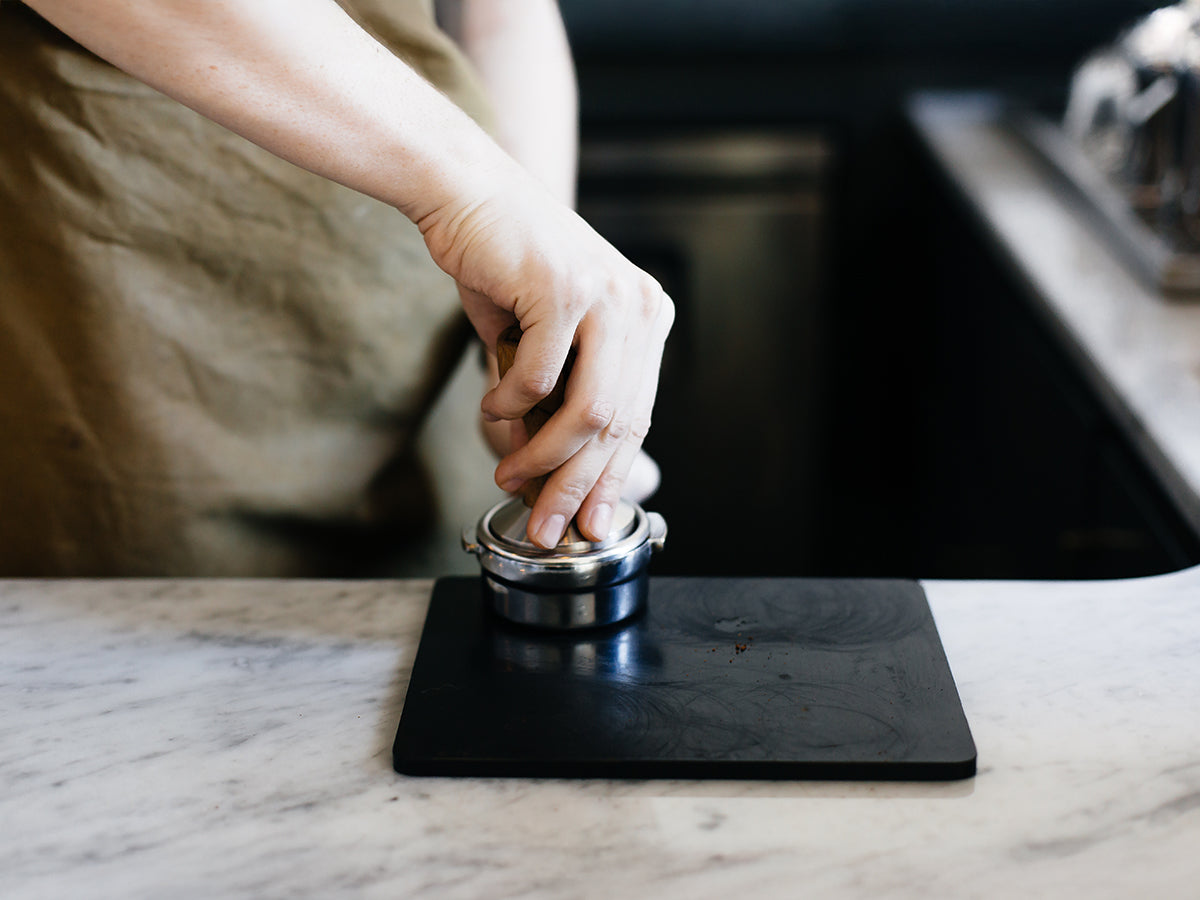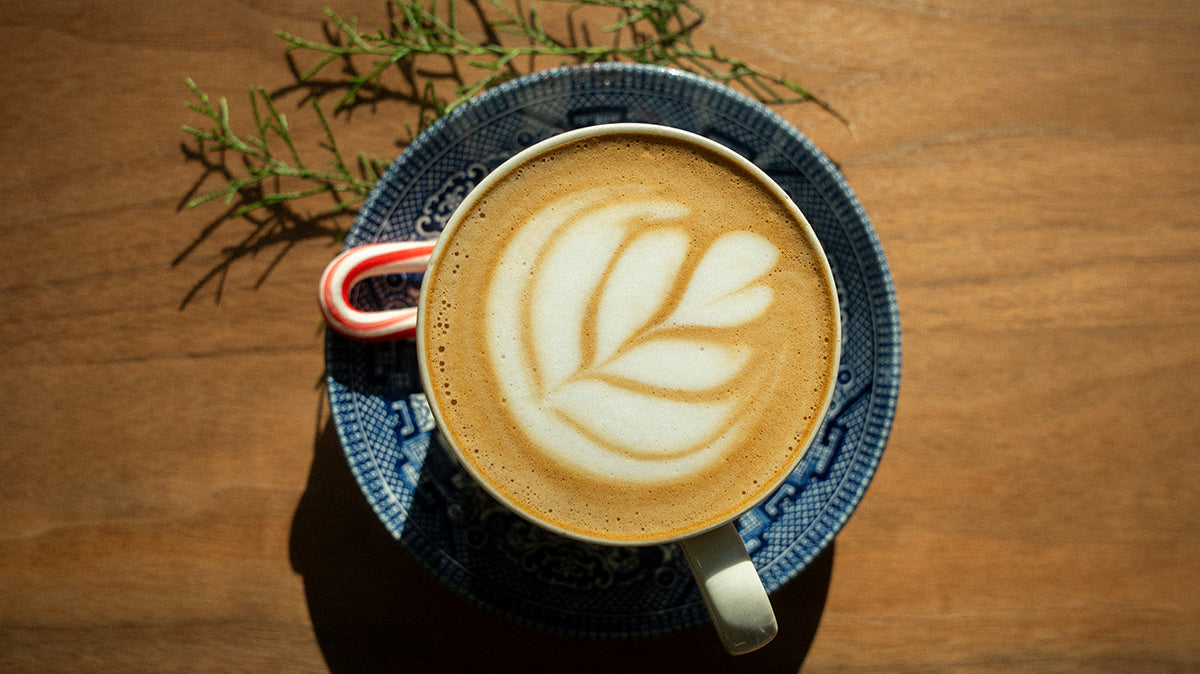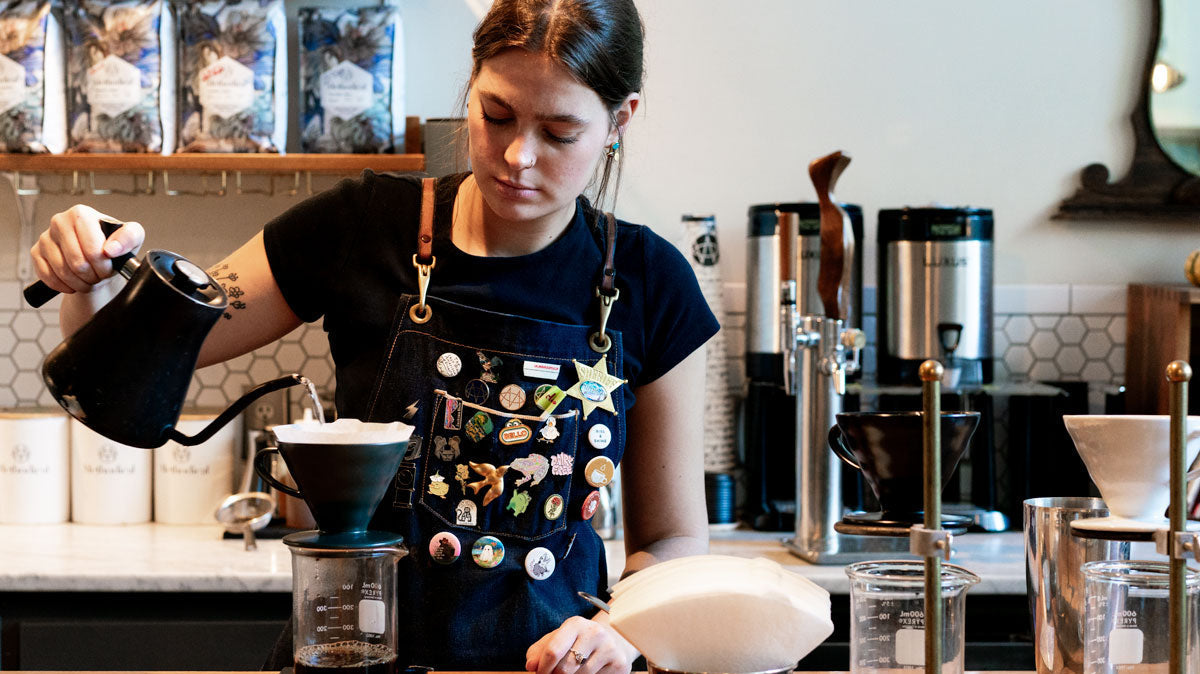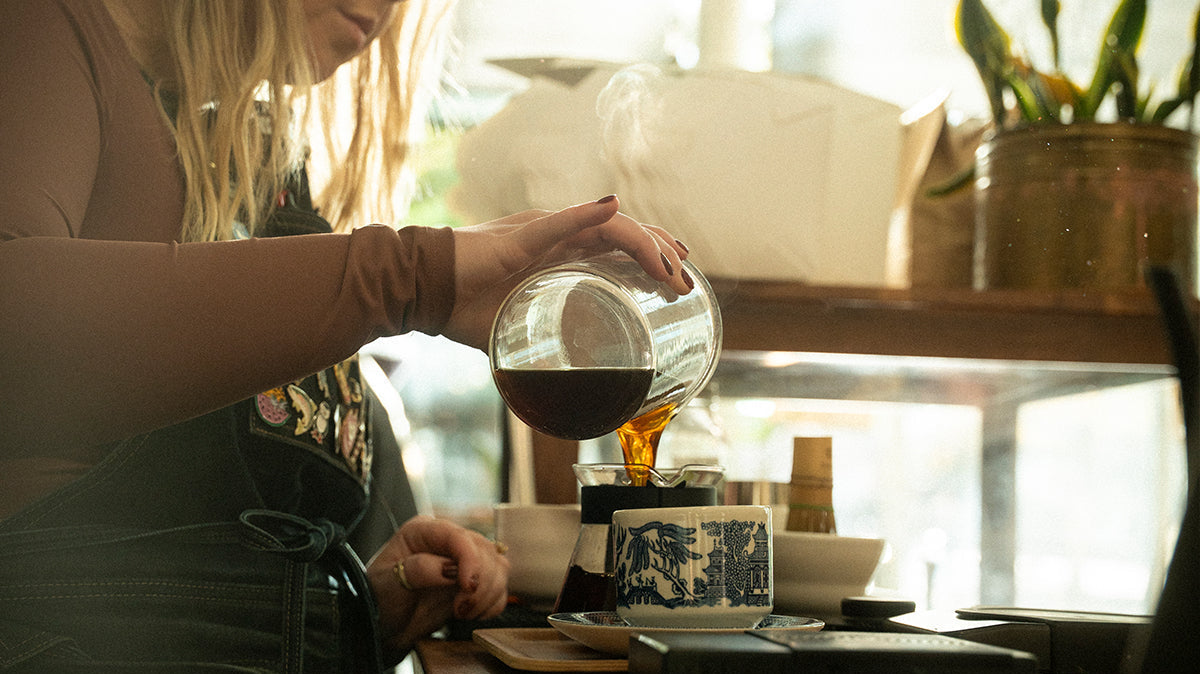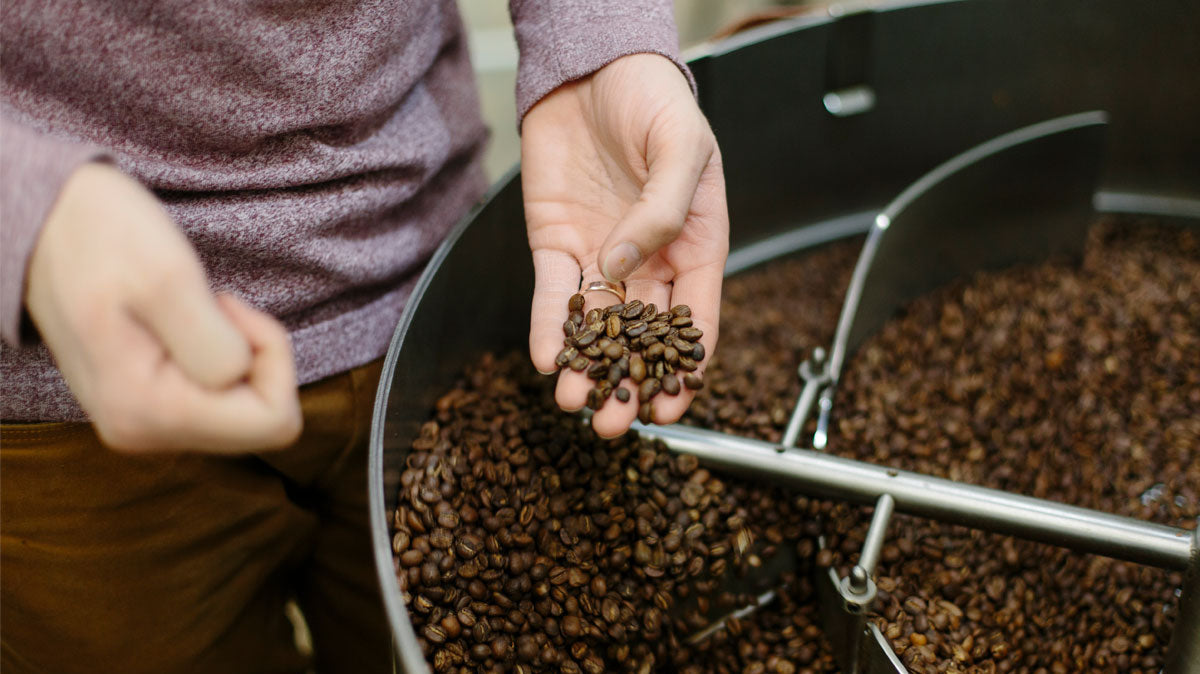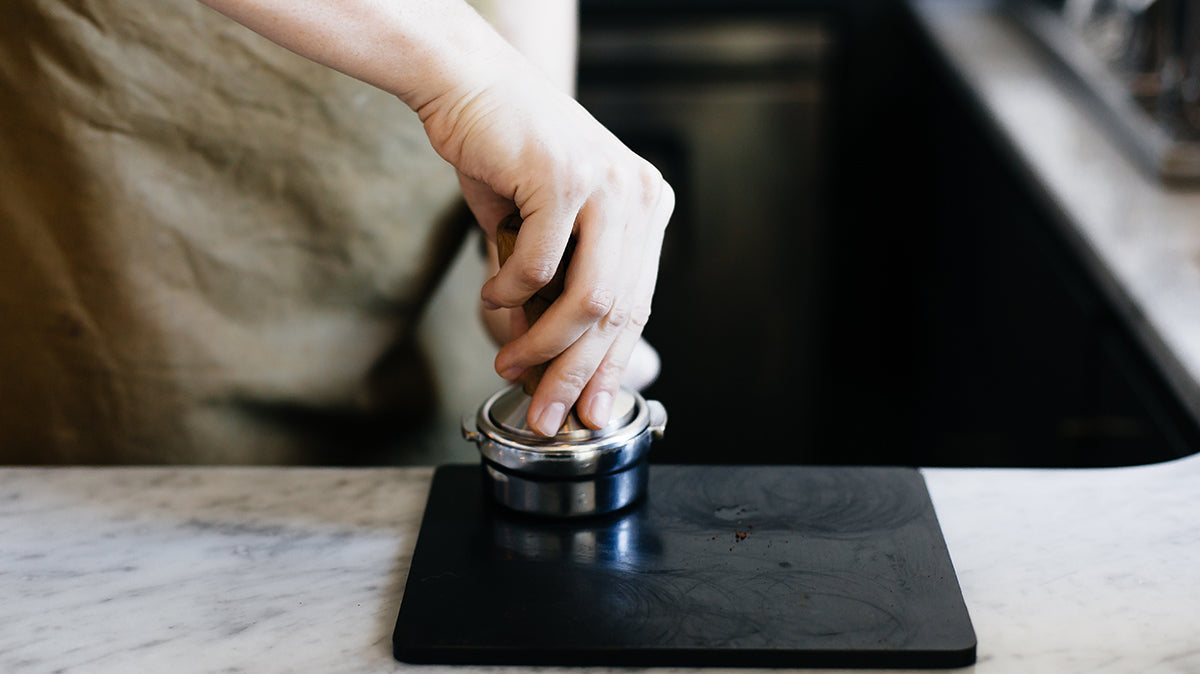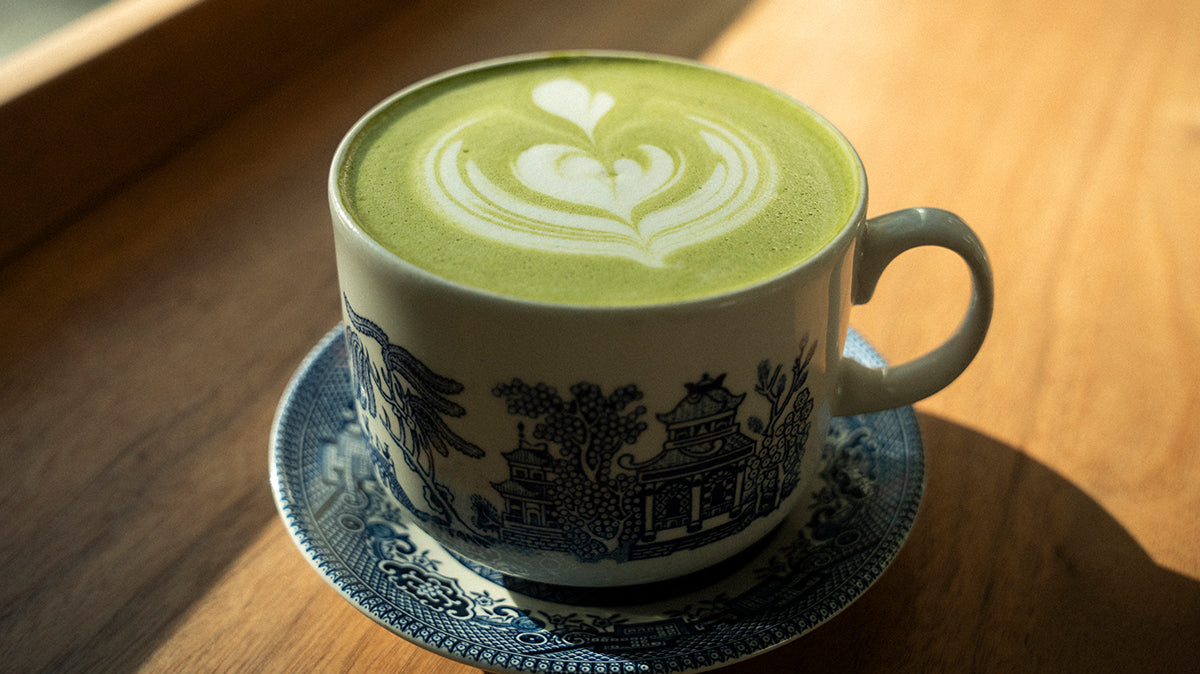In recent years, blonde espresso has gained traction as a lighter, smoother alternative to the bold flavor of traditional espresso. You’ve likely seen it on café menus or heard friends describe it as “less bitter” or “sweeter.” But what exactly is blonde espresso, and why do only some coffee shops offer it?
In this guide, we’ll explore what the term really means, how it differs from traditional espresso, and how specialty coffee roasters approach espresso without the buzzwords.
What is Blonde Espresso?
Blonde espresso is a bit of a misnomer, a marketing term used by Starbucks in 2018 when unveiling a new espresso roast in their cafes. Blonde espresso presented a smoother, less-bitter option than their standard proprietary espresso roast, which some consumers found bitter and overpowering. With its overwhelmingly positive consumer reception, blonde espresso has become a core item on their menu—as well as a staple in the zeitgeist of modern coffee culture.
From a roasting perspective, “blonde” doesn’t mean anything distinct or technical. Roasters already use a simple, accurate way to describe roast levels: light, medium, or dark. What Starbucks did was give the lighter end of that spectrum a name that resonated with customers who found “light roast” too technical and “espresso roast” too intimidating.
In truth, the difference between blonde espresso and traditional espresso is minimal—it’s primarily a matter of roast level and branding. As a coffee term, “blonde espresso” belongs to what’s often called the second wave of coffee, when large chains use simplified language to help everyday coffee drinkers navigate choices without needing to understand roast science or origin profiles.
How Traditional Roasters Approach Espresso
Espresso is a brew method, not a type of roast, and is a highly concentrated shot of coffee that serves as the base to many popular coffee beverages, like cappuccinos, lattes, and macchiatos.
When brewed, espresso is concentrated, bold, and full-bodied, offering an intensity that sets it apart from drip coffee. Its flavor often leans toward the richer end of the spectrum, with tasting notes similar to dark chocolate, toasted nuts, caramel, or even a hint of smokiness, depending on the roast. Its strong flavor pairs beautifully with cold or steamed milk, which is why espresso is the base of most classic coffee drinks.
At Methodical, we think of espresso as one expression of a coffee’s potential. A well-roasted coffee can yield a rich, balanced shot with syrupy sweetness, or a bright, fruit-forward cup, depending on how it’s brewed.
Instead of branding coffees with names like “espresso roast” or “blonde,” we describe them by origin, processing method, and flavor clarity. These are the elements that truly define what you’ll taste in the cup: the terroir of a Guatemalan hillside, the honey sweetness of a naturally processed Ethiopian bean, or the nutty richness of a classic Brazilian coffee.
Why Marketing Terms Like “Blonde Espresso” Persist
So if “blonde espresso” isn’t technically meaningful, why does it stick around? The answer lies in accessibility.
For large coffee chains, marketing terms help bridge the gap between expert roasting language and casual coffee drinkers. “Blonde” is a recognizable descriptor, after all. But this simplification comes at a cost. Terms like “blonde” or “espresso roast” flatten the complexity of coffee craft into broad categories, leaving out the nuances of origin, processing, and roast development that make each cup unique.
In specialty coffee, the goal is not to simplify but to illuminate—to help people taste the difference between a washed Ethiopian and a natural Colombian, or to understand how roast profile influences sweetness, acidity, and balance.
How to Choose Coffee Beans for Espresso
Any coffee can be brewed as espresso if it’s roasted and ground appropriately. What changes is how that coffee behaves under pressure. When you’re choosing beans for espresso, focus less on labels like espresso roast and more on how roast level and origin interact to create your preferred flavor profile.
For bold, intense espresso
If you’re drawn to a darker, more traditional espresso flavor—heavy body, bittersweet chocolate, and low acidity—look for dark roasts or blends that feature coffees from Sumatra, Brazil, or Central America. This is the style most people think of as “classic espresso,” excellent for mochas or anyone who wants a comforting, deeply flavored cup.
Dark roasts tend to extract quickly and emphasize body and bitterness over nuance. They create a velvety, full-bodied espresso with roasted, caramelized flavors and minimal acidity. Perfect for those who like their coffee rich and assertive.
→ Perfect for classic espresso flavor
If you love the familiar depth of dark chocolate, roasted nuts, and lingering richness in your coffee, choose a darker roast. Drinks like ristrettos, Americanos, and macchiatos benefit from that intensity and smooth finish.
→ A reliable choice for beginners
Darker espresso feels approachable thanks to its low acidity and comforting flavor profile. The familiar bitterness and body make it forgiving to brew and satisfying to drink, whether you’re pulling shots at home or ordering from your favorite café.
→ Our recommendation
Try our Late Night blend if you prefer your espresso bold, chocolate-forward, and indulgently smooth.
Learn more: The Complete Guide to Drinking Espresso for Beginners
For sweeter, balanced espresso
If you enjoy smooth, rounded coffee with comforting flavors of chocolate, caramel, or nuts, medium roasts are an excellent choice for your espresso. Coffees from regions like Colombia, Guatemala, or Brazil naturally offer those crowd-pleasing flavor notes, with just enough acidity to keep the cup lively.
Medium roasts strike the sweet spot between the brightness of light roasts and the smokiness of dark roasts. They dissolve evenly during espresso extraction, yielding a syrupy body, gentle acidity, and a lingering sweetness that pairs beautifully with milk.
This style of espresso is perfect for cappuccinos and lattes, or for anyone who wants balance over boldness.
→ Great on its own or in milk-based beverages
Medium-roasted espresso performs beautifully across a range of drinks. It has enough structure to hold its own in a latte or cappuccino, while still offering complexity when served as a straight shot or Americano.
→ Ideal for those refining their palate
If you’re still exploring what kind of espresso you like, medium roasts are a great starting point. They offer the best of both worlds—lively but not sharp, sweet but not heavy. Expect notes of brown sugar, cocoa, and gentle fruit or spice.
→ Our recommendation
Try our Blue Boy blend for a dependable, balanced espresso that’s rich, smooth, and perfectly balanced.
For bright, complex espresso
If you prefer something that captures the full character of the coffee itself—vibrant, nuanced, and a little adventurous—seek out light roasts or high-elevation single origins from places like Ethiopia, Kenya, or Rwanda.
These coffees often have denser beans with higher acidity, which makes them more challenging but also more rewarding to pull as espresso. When dialed in correctly, they express layered flavors of citrus, florals, and fruit.
Light roasts extracted as espresso tend to have a cleaner finish and more clarity, letting you taste the unique terroir of the coffee’s origin.
→ Excellent for iced drinks
Because lighter roasts have a higher acidity and cleaner finish, they stay lively when chilled. If you enjoy cold espresso-based drinks like iced Americanos, shaken espressos, or espresso tonics, a lighter roast will add refreshing vibrancy and structure.
→ Appealing to curious or experienced drinkers
While often marketed as approachable, lighter-roasted espresso can actually surprise new drinkers with its tartness and complexity. Those familiar with espresso may find it exciting, each sip revealing fruit, floral, or tea-like layers that showcase a coffee’s true origin.
→ Our recommendation
Try our Pink Lady blend if you enjoy an espresso with lift, brightness, and refined fruit character.
Frequently Asked Questions About Espresso
Still got questions? We’ve got answers.
Does blonde espresso have more caffeine?
No, light roast coffees do not have more caffeine than other coffees. The truth is that coffee roast has little to no effect on caffeine content whatsoever. The main difference lies in the flavor and tasting notes of the coffee.
Can any coffee be used for espresso?
Yes. Espresso refers to how coffee is brewed, not a special type of bean. With the right grind size, dose, and pressure, almost any coffee can be brewed as espresso. What changes is how the coffee’s origin and roast respond to that extraction method.
Why does blonde espresso taste more acidic?
Lighter roasts retain more of the coffee’s natural acids and aromatic compounds, creating flavors described as citrusy, floral, or tart. Darker roasts convert more of those acids, developing a more robust flavor and drawing out more bitterness. Neither is “better”—they’re simply different expressions of the same bean.
Is blonde espresso better for iced drinks?
Often, yes. The crisp acidity and lighter body of a blonde or light-roasted espresso stay vibrant when chilled. That’s why it works especially well in iced Americanos and shaken espressos.
Can I use dark espresso beans for pour over or drip coffee?
Absolutely. Just like espresso can be brewed from any roast, dark-roasted coffee can be used for drip or pour over—though you’ll get a more intense, smoky flavor compared to a light or medium roast. Adjust your grind and ratio to balance extraction!
Enjoy Espresso the Methodical Way
At Methodical, we don’t label coffees with terms like “blonde” or “espresso roast.” Instead, we roast with balance, clarity, and sweetness in mind. Our process allows the coffee to speak for itself, no matter how it’s brewed.
Our coffees fall into three categories that help guide flavor preference:
- Classic coffees: dark, full-bodied, notes of chocolate, spices, and nuts
- Contemporary coffees: balanced, medium-bodied, notes of dark chocolate and dried fruit
-
Avant-Garde coffees: acidic, adventurous, fruit-forward, experimental
Whether you gravitate toward chocolate-rich espresso or floral, citrusy shots, our approach invites you to explore how origin and roast interact to create your ideal flavor profile.
You might also like:
- Single Origins vs. Blends—What's the Difference?
- How to Choose a Home Espresso Machine
- Should You Freeze Your Coffee Beans?
